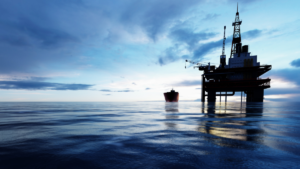One of the metals that Special Piping Materials specialises in is Stainless Steel and it is used in a huge variety of industries. In this blog we are looking at stainless steel in offshore applications.
Stainless steel is a robust material choice for heavy-duty offshore applications. The metal is fundamentally resistant to corrosion, even in high saline marine and coastal environments, and it provides a high strength-to-weight ratio for infrastructure. Stainless steel also has a long life cycle and a remarkable resistance to extreme pressure and high temperatures.
In this blog we are going to look at stainless steel in offshore applications – why it is used, costs of using it, how it is used and what grades of stainless steel are chosen for different purposes.
How is Stainless steel used in offshore applications
Offshore projects are essential for the production and processing of hydrocarbons around the globe. However, the environment of offshore equipment and projects is very challenging indeed.
The infrastructure and equipment used for marine and offshore applications is subject to significant amounts of air- and water-borne salts meaning that traditional carbon steel structures are subject to frequent corrosion, thus requiring regular maintenance and upkeep.
Understandably, the extreme saline marine environment means that very high safety and longevity standards are in place for offshore platforms.
This is why stainless steel is so prolific within the offshore industry. Stainless steel, duplex stainless steel and super duplex stainless steel offer reduced weight, increased strength and corrosion resistance, and favourable lifecycle costs. They are generally considered to be better on all these factors versus other comparable materials.
Lifecycle cost of stainless steel in offshore applications
It is important to note that by using stainless steel, offshore operators can increase the life expectancy of their structures by nearly five times – impressive stuff on anyone’s measurement!
In addition to this enhanced life expectancy, stainless steel is also the metal of choice for the offshore industry because it has a minimal lifecycle cost (LCC) in architecture and construction.
This emphasises the trend and high demand for the development of infrastructure that is highly durable and does not require extensive maintenance or repair. Following this approach helps to reduce costs while protecting the durability of a project.
Interestingly, weight reduction is also a major factor when choosing stainless steel for the installation of offshore structures. The lower weight yet high strength of stainless steel in comparison to other metals means that the structures are more cost effective to build, while also allowing for more drill pipes and production equipment to be supported for oil and gas production and exploration.
Grades of stainless steel for offshore applications
Choosing the best stainless steel grades for specific requirements is necessary to ensure the cost efficiency, longevity and safety of an offshore project.
What grades of stainless steel are used for different offshore applications? Let’s find out…
- – Stainless steel 316L has been a very popular and highly sought-after austenitic stainless steel grade used for offshore applications. It keeps its strength at high temperatures and helps to protect a structure against severe acidic environments.
- – Austenitic grades of stainless steel, containing 6% molybdenum, have regularly been used for permanent immersion in seawater, although these grades are becoming less popular due to the cost of nickel.
- – In recent years, duplex stainless steel has taken over the austenitic grades in popularity. This is because of its mechanical properties and resistance to stress corrosion cracking. UNS S32205 is thought to be the most common duplex stainless steel grade used in offshore installations.
- – Super duplex stainless steels have also been growing in popularity. Super duplex grades are distinguished by the presence of higher levels of nitrogen, chromium, molybdenum, and nickel. It is thought that these grades have improved mechanical properties than duplex grades and they do have an improved resistance to pitting and crevice corrosion. Examples of these are S32750 and UNS S32760 which can be used for permanently submerged components of offshore projects and pipeline systems.
How is stainless steel used in offshore applications?
There are many used of stainless steel in offshore applications. These include:
- – Submerged components: Pipelines and grills for oil, sewage and water, risers for oil platforms, heat exchangers for ships and coastal power plants, equipment attached to hulls of boats and ships.
- – Platform structure components: Pumps, winches, storage vessels, process vessels, blast gates, umbilical tubes, rebars, cable trays, stairs, tread plates, walkways, oil and gas coolers, gravity separators, etc.
- – Deck components for boats and ships like deck eyes, brackets for anchor ropes, shackles, etc.
- – Coastal (land-based) handrails, ladders, lamp posts, etc.
The future of stainless steel in offshore applications
As the oil and gas market increasingly focuses its search on even more hazardous environments, the demand for corrosive resistant and high strength stainless steel products is growing.
This means that the future of stainless steel in offshore applications is bright indeed as the metal’s numerous qualities and properties means that it is going to continue to be used in great quantities.
Special Piping Materials has been working with the offshore industry for many years. We understand the requirements of this complex global industry and are able to supply it accordingly with some of the best stainless steel products on the market.
We work closely with our network of mills, manufacturers and shipping companies to ensure our high-quality and in-demand stainless steel pipes, fittings and flanges are made to the highest standards, and delivered to where they need to be as quickly as possible.
